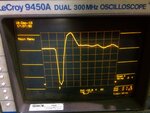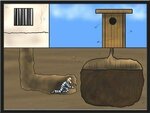
- Joined
- Jan 22, 2008
- Messages
- 53,719
- Helped
- 14,812
- Reputation
- 29,921
- Reaction score
- 14,449
- Trophy points
- 1,393
- Location
- Bochum, Germany
- Activity points
- 303,689
"Measure" (=monitor the occurance) of nanosecond waveforms with a spark gap? Please review laws of physics and reconsider.






